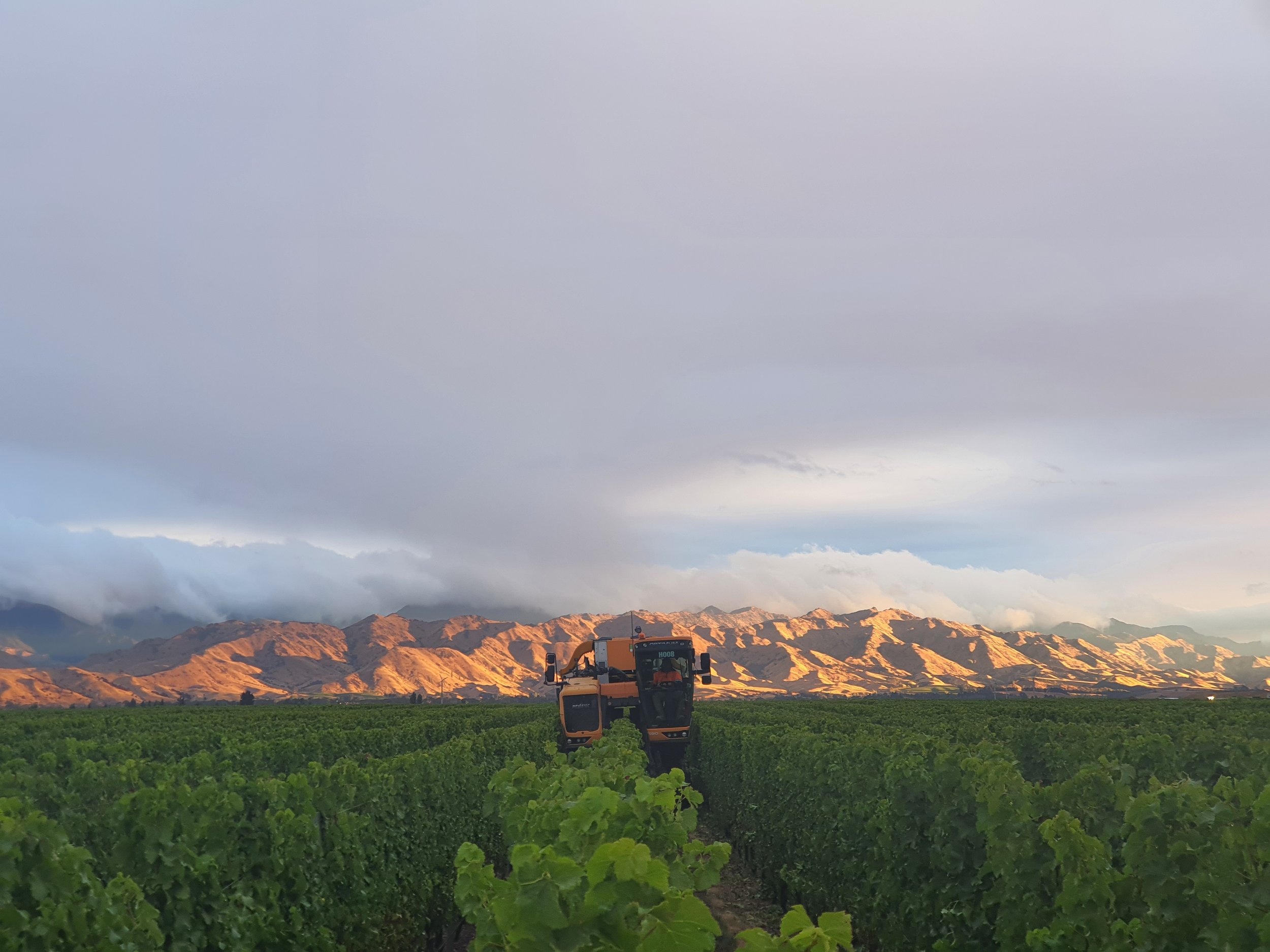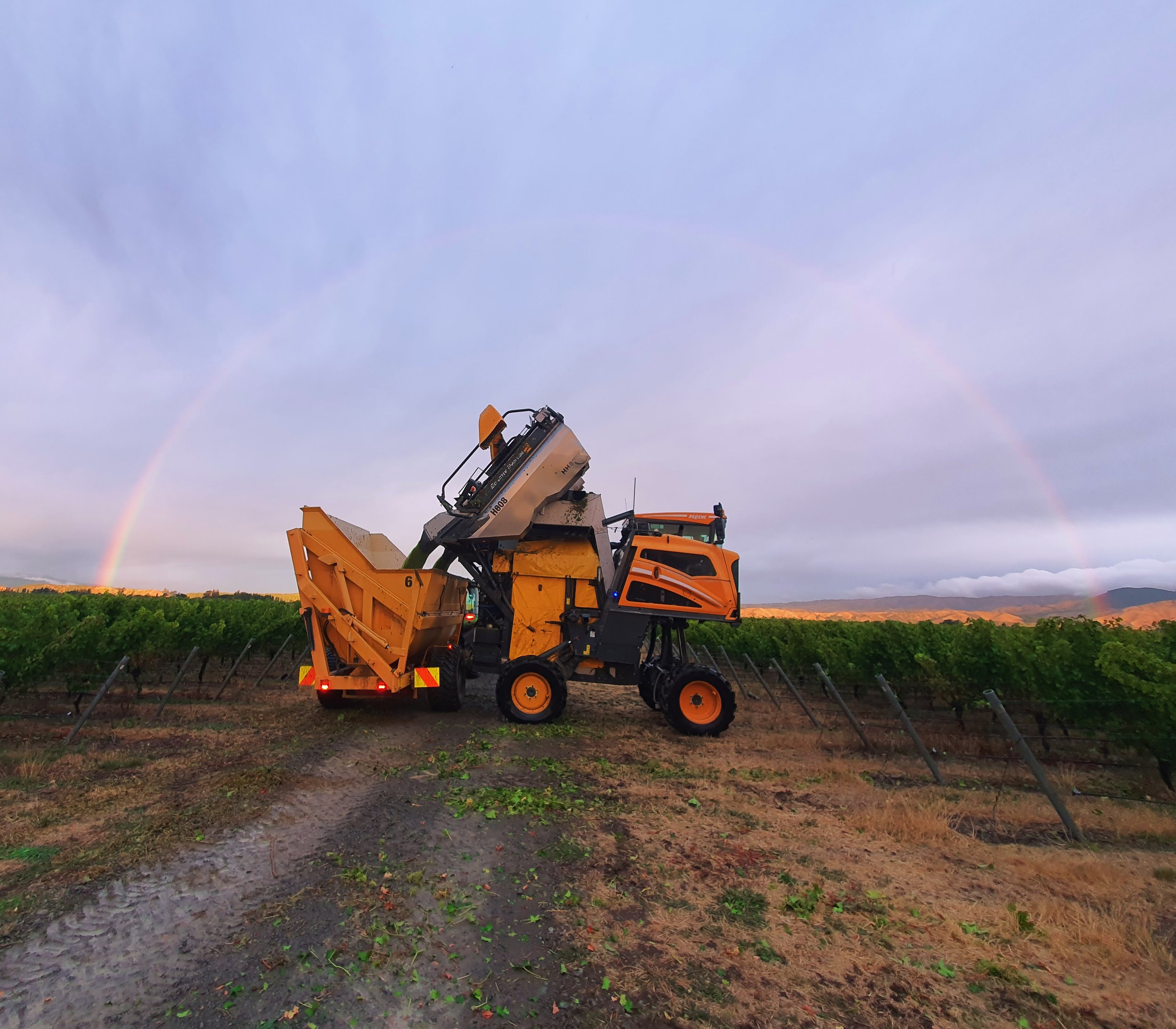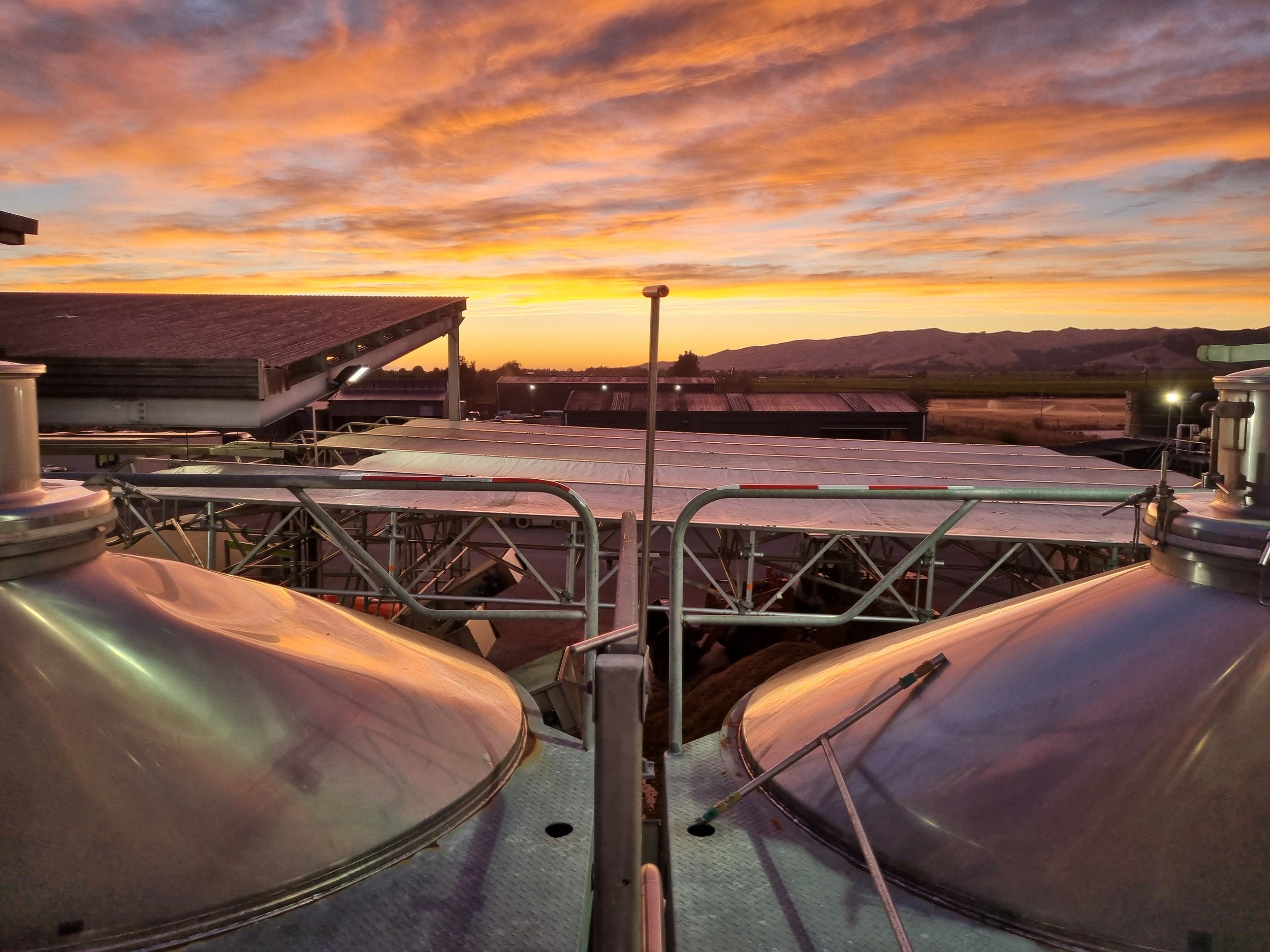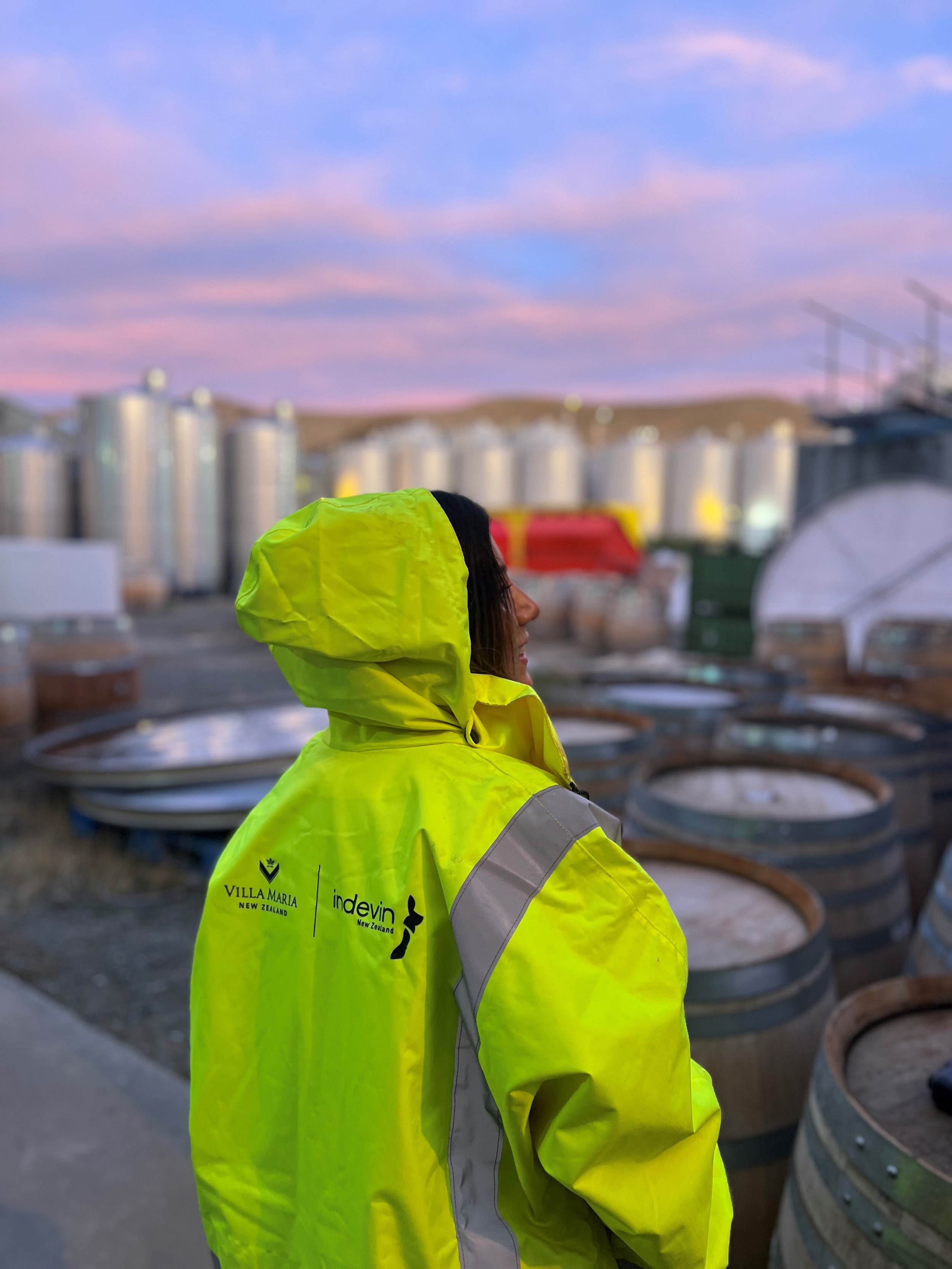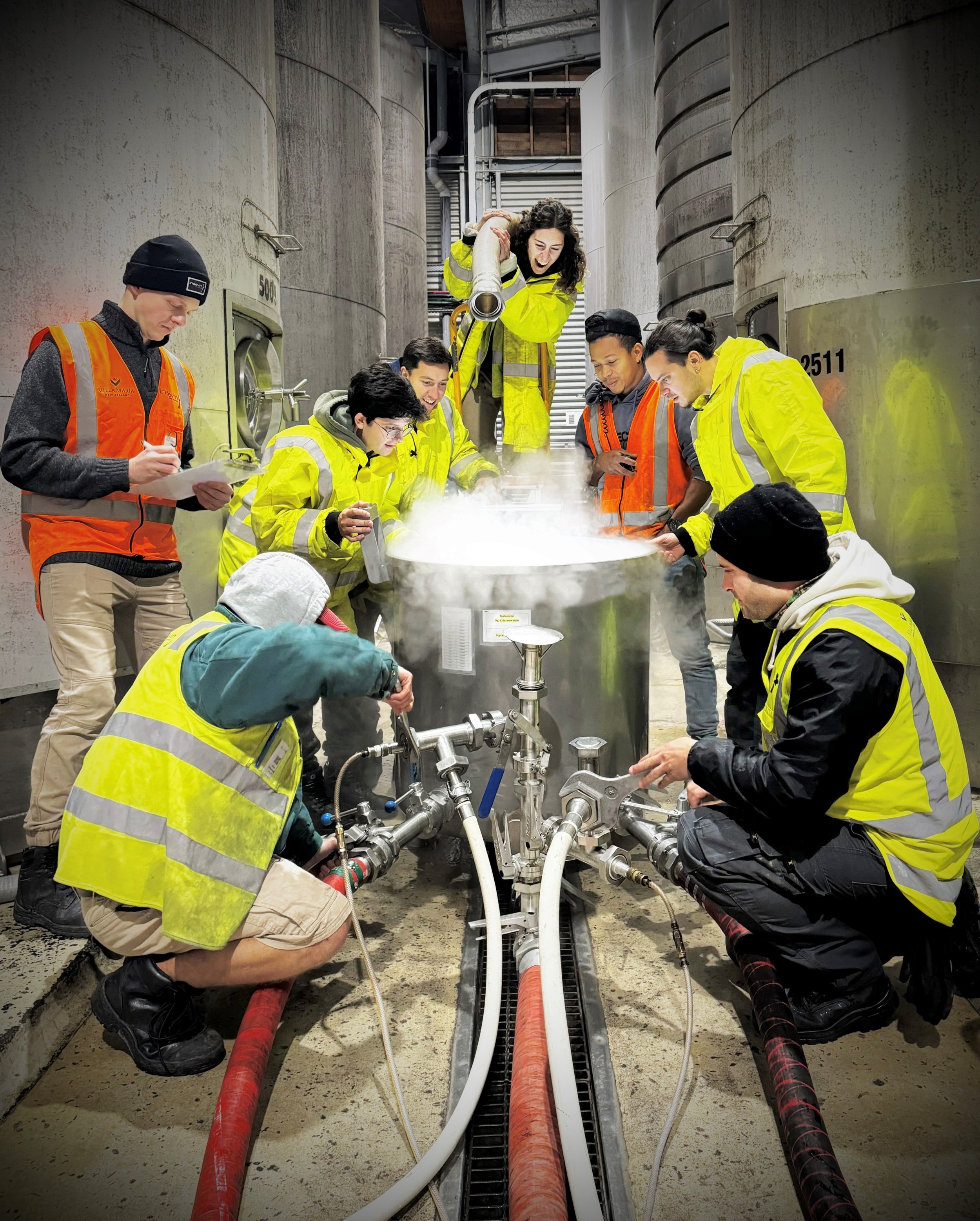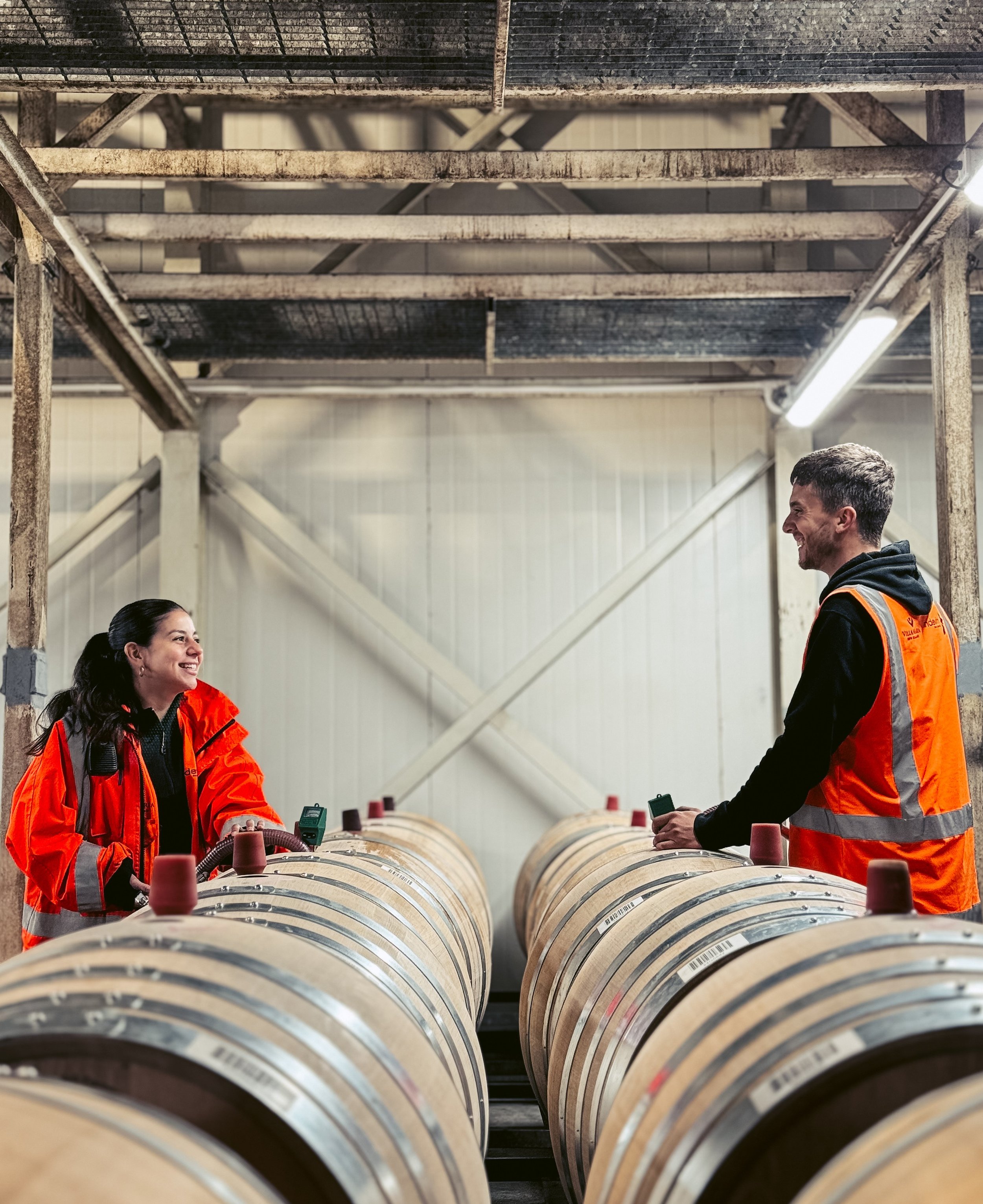director of winegrowing, patrick materman summarises a harvest of smaller yields but outstanding quality
Overview
2024 has been an exceptional vintage across New Zealand’s winegrowing regions. Despite lower yields due to variable weather during the flowering periods, the mid - December shift to an El Niño weather pattern brought dry, settled conditions through harvest. With minimal disease pressure, clean, ripe fruit was harvested, with intense flavours whilst preserving great natural acidity. Even at this early stage, the resulting wines appear to be of fantastic quality.
Marlborough
Early December saw variable temperatures and moderate rainfall, resulting in mixed fruit-set across all varieties. The timing of flowering and fruit-set across Marlborough’s sub-regions had a considerable influence on yield. While some subregions achieved healthy crop levels, overall yields were well below the long-term average. From mid-December through to the end of harvest the El Niño weather pattern brought hot and dry conditions, advancing the harvest start date. Cooler nights through the harvest period maintained the retention of natural acidity and slowed ripening. Low yields and open bunches minimised disease pressure, leading to ripe, pure, and intense varietal flavours with excellent acid base. The 2024 vintage is truly outstanding.
Season Standouts
In a great vintage such as 2024, it's a challenge singling out a star. All varieties have benefited from near perfect growing conditions and show excellent varietal expression. Although the mid-season was hot, the cooler harvest period preserved the region’s signature bright, natural acidity. Sauvignon Blanc displays notable sub-regional expressions from which to blend or create stand-alone wines. While Pinot Noir shows deep colour, real depth of rich flavour, but retains the all-important perfume and elegance.
Hawke's Bay & Gisborne
Following the challenges of the Cyclone Gabrielle in the 2023 vintage, 2024 has brought a stunning harvest to both Hawke’s Bay and Gisborne.
Spring saw variable temperatures and higher-than-average rainfall, keeping the water supply high but affecting fruit-set across both regions. This led to low yields, with prolonged flowering. From mid-December, the El Niño weather pattern brought hot and dry weather, accelerating fruit ripening. These favourable growing conditions, combined with low disease pressure, resulted in high fruit quality, exceptional varietal character, and purity of flavour in the resulting wines.
Season Standouts
With no part of the harvest under weather or disease pressure, picking decisions could be based on optimal flavour ripeness and all varieties look superb. Notable examples include Chardonnays from both regions and the dry conditions have been fabulous for our red varieties grown on the Gimblett Gravels. Producing only its second crop of Sauvignon Blanc, our Springhill Vineyard, well inland in Central Hawke's Bay shows tremendous promise.
Above: A selection of the fantastic entries into this year’s photo competition!

